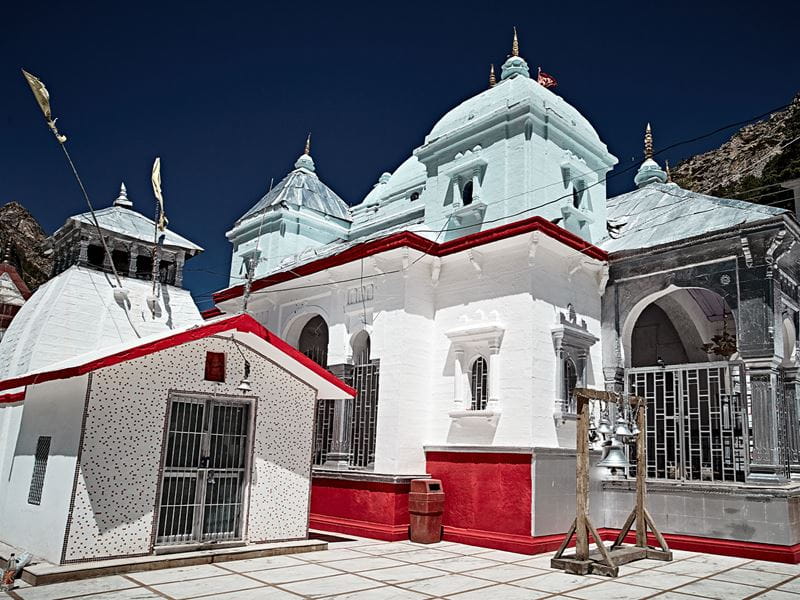
- Trending:
- Pope Leo Xiv
- |
- Israel
- |
- Trump
- |
- Social Justice
- |
- Peace
- |
- Love
The 100 Most Holy Places On Earth
Gangotri Temple

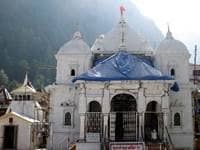
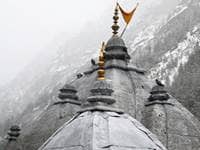
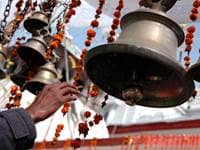
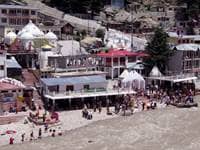
Associated Faiths:
Hinduism
Has some draw on those of other dharmic traditions.
Accessibility:
Open to visitors from Akshay Tritiya (April/May) through Diwali (October/November).
Annual visitors: 650,000
History
The Gangotri Temple is located in a northern Indian town by the same name. It rests in the Greater Himalayan mountain range, at over 10,000 feet. Because of the melting Himalayan snow, and because the town was built on the banks of the Bhagirathi river—one of the two headstreams that merge to create the Ganges—Gangotri is said to be the “origin” or “source” of the river Ganges. The term “Gangotri” means “Ganga going north”—because it is from this small Himalayan town that the Ganges starts and makes its way northward, ending at the Bay of Bengal.
With a temple at its heart, Gangotri is one of four cities which comprise the revered Chota Char Dham Yatra pilgrimage circuit. (“Chota Dham” means “the small four abodes,” and implies that this circuit of four temples are geographically quite close together, relatively speaking.) The four towns and temples in this circuit are Badrinath, Gangotri, Kedarnath, and Yamunotri.
The white marble Gangotri Temple was built in the early 19th century by Amar Singh Thapa, a Nepalese general (often called the “Living Tiger of Nepal”). Severely damaged by an avalanche, the temple had to be rebuilt or repaired within 100-years of its initial construction. Its original builder, Amar, was a builder at heart, responsible for the construction of numerous military forts in various parts of India and Nepal—as well as constructing the Sri Ram Temple and Amar Narayan Temple. While he was a famed warrior in Nepal, he is also known to be a very spiritual man, initially following Hinduism, but later becoming converted to Sikhism—though he never joined the Sikh Khalsa (or army).
The Gangotri Temple is dedicated to Ganga Devi, a Hindu goddess, who is believed by Hindus to be the “personality of the Ganges River.” Because of its association with her, the Ganges River is considered sacred—the most holy of any river in the world. Though there are many temples dedicated to the “mother of humanity” (Ganga Mata), the Gangotri Temple is the highest in elevation of all temples dedicated to Ganga.
Religious Significance
Gangotri and its temple are major pilgrimage sites in northern India. While the town has barely more than 100 residents (approximately 90% of which are men), it is actually a rather crowded town for 6-months out of every year. The temple is the primary draw. During the half of the year where the weather allows accessibility to this holy site, it is flooded with faithful pilgrims who wish to worship the goddess Ganga at this most important shrine. A visit to the Gangotri Temple is considered an auspicious event for Hindus, and it is karma remitting as well.
As the source from whence the Ganges starts, the Gangotri Temple is also the seat of the goddess Ganga. According to Hindu tradition, King Bhagiratha wanted Ganga to send the waters from heaven down to the earth, as he wanted those sacred waters to purify the remains of the sons of his great-grandfather. Ganga explained to the king that if she allowed the heavens to open and the water to flow freely down to earth, the force of the waters would destroy the planet. So, the king petitioned Lord Shiva to allow the waters to fall from heaven onto his head, and from there to trickle down to the earth, thus eliminating the force of the waters and their potential damage to the earth. Shiva agreed to do so. He sat in meditation as the waters poured out of the heavens—and the extremely loud Sahasradhara Falls (in Gangotri) are believed to be where he received those sacred heavenly waters. It was through the coils of Shiva’s hair that the water made its way to the earth.
Since the Ganges River really is the lifeline of India, providing water for crops, animals, and people, it is viewed as incredibly holy. It is itself a living, breathing, moving god (in the minds of traditional Hindus). And if the Ganges is the most sacred of all rivers, the head of the Ganges (i.e., the town of Gangotri and its holy Hindu temple) is equally sacred. Whereas the goddess Ganga Devi is the “mother of humanity,” the Gangotri Temple is the umbilicus through which she dispenses her life giving and life sustaining water to the subcontinent of India.
All of this makes the Gangotri Temple a most sacred pilgrimage site. While every practicing Hindu hopes to make at least one pilgrimage to the Ganges, if not many, during their lifetime; one of the most powerful places to make that pilgrimage would be Gangotri. For faith-filled Hindus, this holy city is the source of the Ganges and the seat of its karma remitting goddess.








